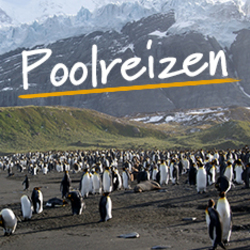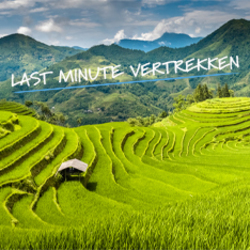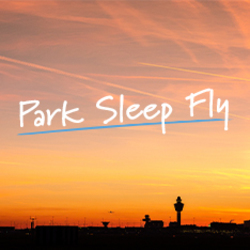Maak kans t/m 5 januari
BekijkActivities
- Culture
- Natural Wonders
- — Discover the highlights of Madagascar, an extraordinary island with unique flora and fauna — Visit the Alley of Baobabs at sunset to see these unusual and ancient trees in a golden light — Hike among the towering limestone pinnacles of Tsingy National Park — Join experienced local trackers for the best encounters with lemurs in their natural habitats — Explore Isalo National Park, home to amazing rock formations, spectacular canyons and natural swimming holes — Seek unusual species, such as tenrecs, indris and sifakas, in Andasibe and Ranomafana national parks
Food
-
1
Start Antananarivo
Our adventure starts in Antananarivo, known locally as Tana. There will be a group meeting and briefing in the evening followed by an optional group dinner for those who would like to join. Accommodation: Hotel Le Chato (or similar)
-
2
Morning city tour in Antananarivo; afternoon drive to Andasibe; guided night walk
We embark on a short bus tour of Tana this morning. With bustling markets and a hilltop ancient town with freestone churches and old royal places, it is unique among world capitals. We then set off for Andasibe, arriving around 3pm, where we visit the community-run Vondron’olona Miaro Mitia Ala Reserve. Here we hope to see groups of the teddy bear-like indris in their natural habitat, while their white-headed relatives, diademed sifakas, jump between the treetops. There are also countless frogs along the crystalline river here and several forest-dwelling chameleons. In the early evening, we take a twilight/night walk and look for nocturnal lemur species. Accommodation: Sahatandra River Hotel (or similar)
-
3
Morning trek in Andasibe National Park; return to Antananarivo
Today we explore Andasibe National Park (also known as Perinet) on a four-hour wildlife walk. The park is home to indri, the largest of lemur in Madagascar, plus other flora and fauna and a wide array of birdlife. Listening to the piercing yet melancholy cry of the indri in the morning is an evocative sound and for those prepared to follow them through the thick rainforest, the reward is often a close-up view. A group of five diademed sifaka have recently been re-introduced to Andasibe from Mantadia and we may spot one of these unusual creatures if we are lucky. We return to Tana in the afternoon. Accommodation: Au Bois Vert Hotel (or similar)
-
4
Fly to Morondava; visit Alley of Baobabs
We depart early today to catch a flight west to the coastal town of Morondava, known for having one of the finest climates in Madagascar. We then pick up 4x4 vehicles in the afternoon and visit the Alley of Baobabs, where ancient baobab trees line an unpaved road known as the most scenic in the country. We then drive to Kirindy dry forest reserve where we spend the night. Accommodation: Relais du Kirindy (or similar)
-
5
Drive to Bekopaka, with a visit to Kirindy dry forest reserve
Today we visit Kirindy Reserve, home to the giant jumping rat, seven lemur species and the fossa, an endemic creature that looks like a cat-weasel cross. Then we travel approximately nine hours on a dirt road to Bekopaka, passing baobab forests, desert and local villages, and crossing the Tsiribihina river by ferry. The western landscape is arid but beautiful. Accommodation: Olympe de Bemaraha (or similar)
-
6
Morning trekking in Tsingy National Park; afternoon return to Bekopaka
We depart early this morning to Tsingy de Bemaraha National Park. A Unesco World Heritage site since 1990, the area has unique geography and well-preserved mangrove forests, but is best known for its spectacular pinnacles: a forest of limestone pillars, some up to 165ft (50m) high. The karst landscape and deciduous forest are a refuge for rare and endangered species and there are more than 11 types of lemur, 90 bird species and 50 reptile species, some of which we might be lucky to spot on our hike. In the afternoon, we head back to Bekopaka and relax at the hotel, perhaps with a swim at the pool. Please note, while our time in this area is a real highlight for most, it involves a demanding walk. Those suffering from vertigo and claustrophobia may find parts of the trek challenging. In some places, we go through caves and narrow chasms; harnesses are used for the more challenging parts of the climb for safety reasons. Accommodation: Olympe de Bemaraha (or similar)
-
7
Take a 4x4 to Morondava; sunset at Alley of Baobabs
We return south after breakfast, taking 4x4s to Morondava by road and ferry. The journey takes approximately 12 hours. We pass by the Sakalava tribe tombs along the way, known for the unusual paintings and carvings that decorate the outside of each tomb. We stop at the Alley of Baobabs again where we plan to spend sunset. This is the best time to see these amazing trees as the colours at this time of day are spectacular, making for a perfect photo opportunity. After sunset, we spend the night in Morondava. Accommodation: Renala au Sable d’Or (or similar)
-
8
Drive to Antsirabe
Today is one of the longest travelling days of the itinerary with a drive time of approximately 12 hours. We pass through the fascinating scenery of Betsiriry Plateau and the savannah plains as well as the many villages interspersed along the way. We arrive at our destination by early evening. Antsirabe is at an altitude of 4,920ft (1,500m) and has a cooler climate. The warm springs and thermal baths here were a real draw in the 19th century. Accommodation: Chambres du Voyageur (or similar)
-
9
Sightseeing tour of Antsirabe; drive to Ranomafana
We start with a sightseeing tour of Antsirabe, including a visit to craft centres. From here, we continue to drive to Ranomafana. With rainforested hills and abundant wildlife, Ranomafana National Park has long been considered one of the highlights in Madagascar, and is one of the most visited national parks in the country. The entrance lies about 4mi (7km) from Ranomafana village. In addition to densely forested hills, the terrain is characterised by numerous small streams, which plummet to the beautiful Namorona River. Although much of the region has been logged, the easternmost part of the park retains relatively large areas of primary forest. Accommodation: Centrest Hotel (or similar)
-
10
Morning visit Ranomafana National Park; afternoon visit Ranomafana village
We spend the morning (approximately five hours) exploring Ranomafana National Park, hoping to spot golden bamboo lemurs, which are unique to this park, plus other lemurs, including eastern woolly, red-bellied, grey bamboo and red-fronted brown. This park is also home to other mammals including tenrecs, bats, mongoose and the Malagasy striped civet. In the afternoon, we visit Ranomafana village, where we see typical Tanala tribe houses and the public thermal bath. The evening is spent on a night walk along the roads in the hope of spotting nocturnal lemurs, chameleons and other animals. Accommodation: Centrest Hotel (or similar)
-
11
Drive to Ranohira, visiting Anja National Park en route
The scenery changes dramatically today as we drive to the small town of Ranohira, a journey of approximately 11 hours. We stop in Ambalavao to visit Anja National Park along the way, a small reserve where several families of ring-tailed lemurs can be seen in the wild. Accommodation: Isalo Ranch (or similar)
-
12
Full-day trek in Isalo National Park
We spend the day exploring Isalo National Park, a vast region of wind-polished and water-scoured rock towers, deep canyons, gorges and oases often described as Eden. If the conditions are right, we walk in the magnificent Canyon des Makis in search of cheeky ring-tailed lemurs and the Verreaux's sifaka. We also visit the Piscine Naturelle (natural swimming pool), a beautifully lush spot within an arid landscape, where we can swim and relax. The combination of coloured rock formations, strange plants and enveloping silence make this one of the most captivating places in Madagascar. (Please note, Isalo is a big national park and there will be a certain amount of driving involved today. Driving to the Canyon des Makis takes around 1hr 30min to two hours). Accommodation: Isalo Ranch (or similar)
-
13
To west coast and beaches; overnight in Ifaty
We drive to Tulear, among the dry forests of the west and the spiny desert of the south, and we pass both the Mahafaly tombs and the Antandroy tombs, briefly observing their ornate decorations. Antandroy and Mahafaly are reputed to be the most impressive of all Malagasy tombs, with the Antandroy tombs large and brightly painted, relating to the life story and wishes of the deceased. They are also topped with the skulls of zebu sacrificed during the funeral festivity, a ceremony of great significance. Mahafaly tombs are characterised by their wooden sculptures known as aloalo, relating to the life of the deceased and their unfulfilled dreams, as well as their rank within the clan. After a brief stop in Tulear, we continue past the coastal town of Ifaty to Ifaty beach where we spend the night. Accommodation: Hotel de la Plage (or similar)
-
14
Free time for relaxation or optional activities at Ifaty beach
Today we have a free day. Running all the way around the southwest Malagasy coastline, Ifaty beach lies on one of the largest barrier reefs in the world and is an excellent venue for scuba diving. Between late June and early September, whales swim off the beautiful white beaches and the offshore islet of Nosy Ve is a terrific place for snorkelling. Protected by coral reefs, the beach and waters beyond the hotel offer a welcome place to rest. Accommodation: Hotel de la Plage (or similar)
-
15
Fly to Antananarivo
Today we transfer to Tulear airport for our flight to Antananarivo, which typically arrives in the afternoon. Depending on the flight schedule, you may have free time to explore Antananarivo on your own. Accommodation: Le Chato (or similar)
-
16
End Antananarivo
Depending on flight times there may be the opportunity to embark on an optional short visit to Ambohimanga, the fortified village and its royal palace. Ambohimanga, otherwise known as Blue Hills, was once forbidden to Europeans; the local kings and queens returning to this hilltop village to rest and relax. From here began the line of kings and queens who united Madagascar into one country. Ambohimanga remains of spiritual significance for the Malagasy people with ceremonies and rituals still taking place here.































